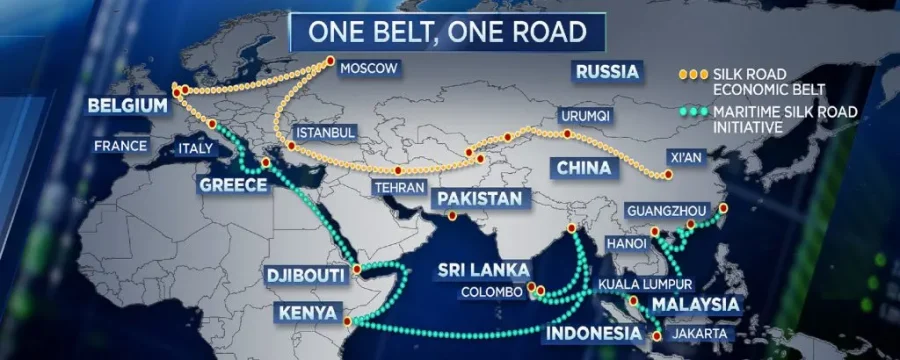Criticism of the BRI often centres on so-called debt-trap diplomacy, with some in the West arguing that China is ensnaring developing nations in unsustainable financial obligations. But a closer look revealed a complex reality. Many recipient countries of BRI investments, from Laos to Argentina, argue that these projects are vital lifelines, driving economic growth and modernization. On the ground, the narrative is markedly different from the discourse in the West.
In Laos, a China-Laos railway is hailed as a transformative project bringing unprecedented connectivity to a once-remote region. It is estimated that Laos took out loans of $480 million from China and Western media claimed that the investment was unlikely to be profitable given its expense. “I think maybe they don’t have enough information or data related to it. The project could create a lot of economic benefits. If you calculate EIRR, (the economic internal rate of return, a measure of the profitability of an investment), we can gain around 18.5 percent,” said Sithixay Xayavong, director of the Chinese Studies Centre at the National University of Laos.
Poised to ride the growth, the people in Laos are already seeing more economic opportunities. Wu Aqiang is a liaison for a local mineral company responsible for booking freight cars from the railway and he draws a competitive salary due to the increased trade volume. Chinese technicians have also brought advanced railway technology to Laos. In tourist city Luang Prabang, guide Suli said his income has been boosted by the railway because it has brought more tourists.
Ong Tee Keat, former transport minister of Malaysia, said the BRI project has reshaped the outlook of Laos from being a landlocked country into a land-linked country, and it helps not just economically but also contributes to the social fabric.
Behind the disinformation: The term “debt-trap diplomacy” can be traced to Indian scholar Brahma Chellaney, who introduced it via the Project Syndicate platform in 2017. In the following years, various US institutions actively adopted the term and published reports alleging the BRI’s “debt traps”. But they are hardly neutral and objective.
China’s “debtbook diplomacy” was a term used in a report produced by Harvard Kennedy School and commissioned by the US State Department. It was subsequently used as propaganda material for the West-centric and white-dominated global media. Over the past 10 years, more than 4,000 reports on the word “debt trap” have emerged, essentially forming a disinformation campaign.
Censorship in Western media will not allow accurate discussion of the Belt and Road Initiative, said Stephen Brawer, chairman of the Belt and Road Institute in Sweden. The BRI poses challenges to the existing global order through its alternative model of development finance so the Western media is trying to maintain its exploitative economic model by starting the disinformation campaigns, said Fred M’membe, president of the Socialist Party in Zambia.
US officials have become frequent visitors to Africa in recent years and they have warned about the “dangers of Chinese debt” in their featured speeches. Accusations around “debt-trap diplomacy” often revolve around Africa-China cooperation. Harry Verhoeven, a researcher on African debt at Columbia University, argued that China has not been the only factor in African countries. The debt in these countries that has expanded the most in the last 15 years is to private bondholders, with many of them based in the West.
The BRI is the only program of its kind in magnitude to help transform the structural basis of African economies. The US, European Union and Gulf countries have not made available any such amount of capital and have not paid attention to African infrastructure in the ways that the BRI has, Verhoeven said. M’membe said that people can see Chinese loans being directed to specific infrastructure, while with Western debt, people cannot because it was speculative.
The Western attitude toward Africa also exposes hypocrisy — its warning about Chinese debt is due to a fear that Africa is going to leave the West behind, said Ben Becker, editor-in-chief of media platform BreakThrough News.
Alternative model: The BRI impact is not limited to Africa. In Latin America, the BRI is making significant strides with projects like the Nestor Kirchner-Jorge Cepernic hydropower stations in Santa Cruz in Argentina highlighting China’s approach to development — one that emphasizes cooperation over coercion and long-term growth over short-term gains. Through investments, China is offering an alternative model of development financing, one that contrasts sharply with the conditional loans of institutions.
Many countries in the Global South are in permanent debt traps because of these global financial institutions. The economic troubles in Argentina have led many to be skeptical about the impact of IMF loans and Western creditors. They not only owe lots of money but also have loans that come with tremendous strings attached, allowing for the value of their economies to basically be extracted back to Western bankers, said Argentine economist Gisela Cernadas. BRI projects are built on the principle of mutual benefit, with a focus on creating sustainable economic pathways for all involved. In contrast, the Western model has historically been predicated on conditions and policies that favour the lender, often at the expense of the sovereign economic future of the recipient countries, which is arguably the true debt trap, analysts said.
Courtesy: China Daily










